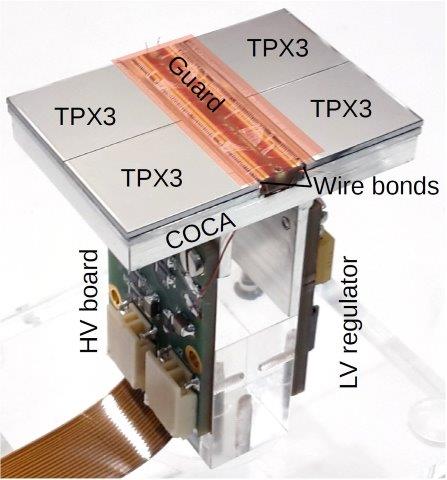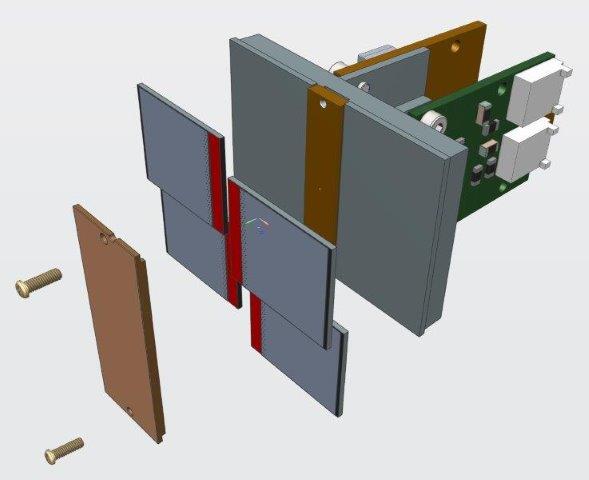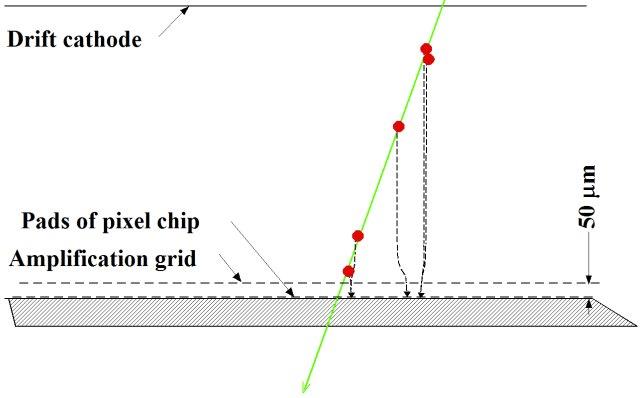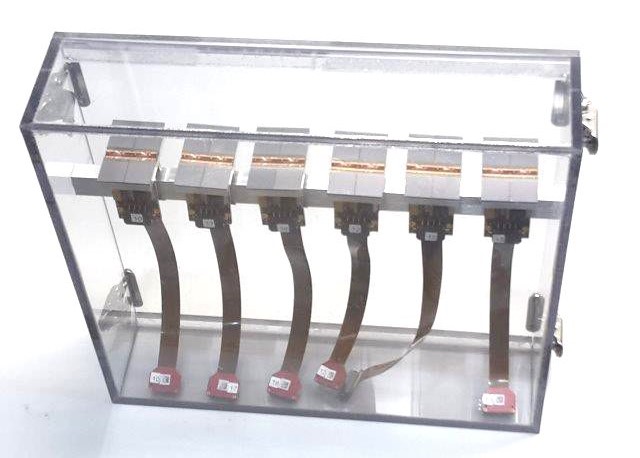
The quad as a building block consisting of four TimePix3 chips.
The guard electrode has been omitted
.

The quad, 28.38 x 39.6 mm detection surface
Back to home page Fred Hartjes
Overview

GridPix principle. Single electrons are detected
This way of construction enables butt joining other quads in all four directions to create an unlimitly large TPC detection surface. The chips having 256 x 256 pixels are equipped with a 1 μm thick grid to provide a gas amplification of 1000 - 2000. In this way, individual ionization electrons can be reconstructed in X, Y and Z.
The base of the Quad is an assembly of a flex connecting two PCBs, the 6 mm wide wirebond board and the low voltage board. A long extension of the flex ends in a connector for the control and output signals of the four TimePix3 chips.

The flex with the wirebond board and the LV board
Because of the space needed for the 6 mm wide wirebond board and the wirebond pads and control electronics on the chips, the active surface of the quad is reduced to 68.9%. The wirebonds and wirebond board are covered by a 10 mm wide guard electrode to maintain a homogeneous drift field.
|
In 2019 12 functioning Quads have been assembled. The assembly of a Quad took me on average two working days. Tedious was especially the routing of the HV wires (80 μm including insulation) and the many glue steps. Based on the experience obtained so far, at a possible upgrade to a GridPix detector element containing only a single TimePix4 chip a very significant reduction of assembly time is expected. |

Storage box with quads |